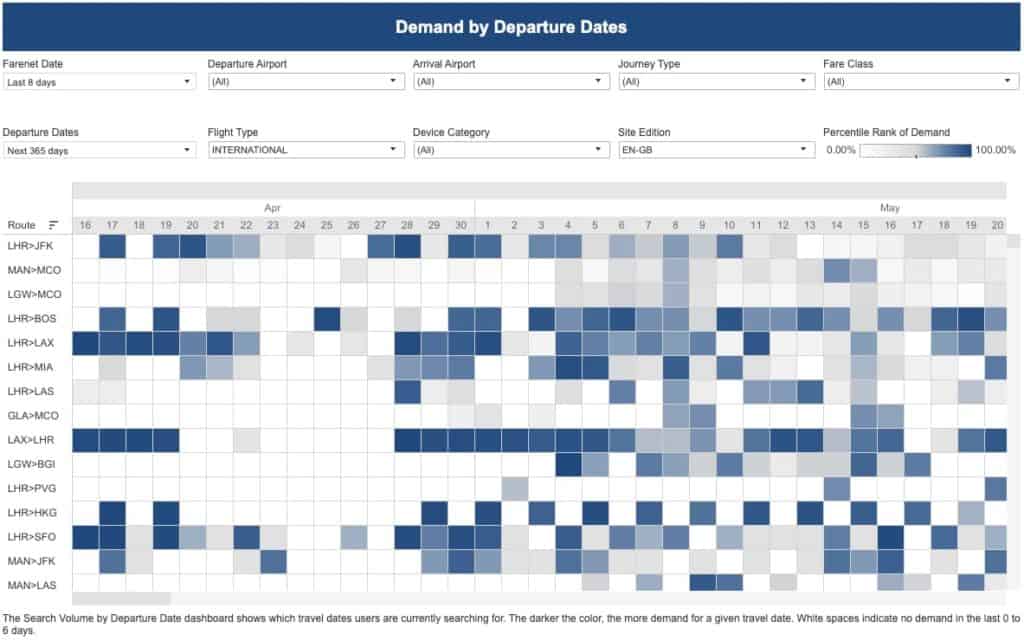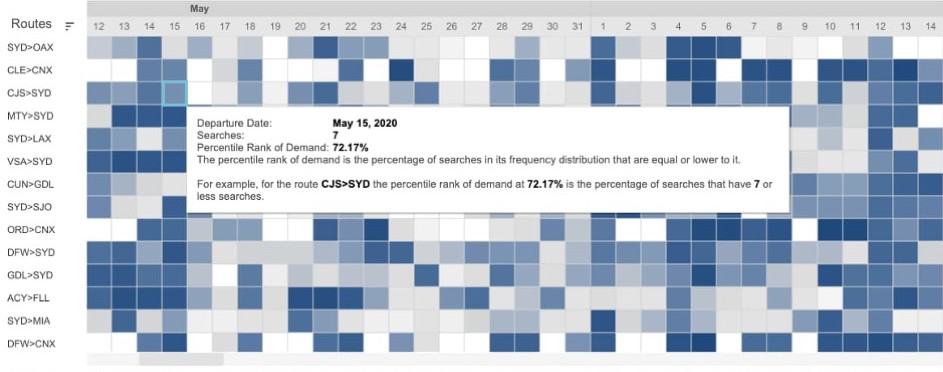FareNet is EveryMundo’s proprietary script that collects User Search Data from our clients’ websites and booking engines in real-time. As users search for flight fares, FareNet captures the search results and sends new low fares to be populated across the web. Each time a flight search is initiated by a web visitor, FareNet captures relevant information about the user search including: origin, destination, travel dates, fares, travel class, and more. This gives our solutions the power to constantly update the route demand for the airline’s network, and send updated fares and trip information without any additional calls to the Res system or GDS. Keeping fares updated and saving airlines additional fees.
FareNet is USDOT compliant, meets WCAG 2.0 Accessibility Guidelines, and provides the highest fare accuracy available. Data from FareNet is used to power EveryMundo products like airTRFX and airWire, which bring real-time fares to millions of webpages every day.
User search data can be used as a decision making tool for network planning by determining route demand and using this information to reopen routes according to traveler interest. This enables airlines to identify their routes with the highest demand, which are their most strategic routes, in real-time and understand the gap between search volume and load factor in order to identify opportunities for fare adjustments. FareNet only collects flight and fare information for every search, it does not collect any personal information at any time. FareNet passively collects and recycles the fare and flight content that any user is already looking at. The pixel fires after the page load and does not cause any additional calls to your GDS.
Read more on determining route demand >
FareNet Demand Dashboard
The FareNet Demand by Departure Date Dashboard shows route demand using search volume by route and day for the next 365 days. Airlines can click each date box to see more granular information on the number of searches for that particular route on that date. This is a decision making tool for network planning, reopening routes and increasing frequencies of existing routes based on the users interest. Airlines can use this information to plan which route to focus on marketing and reopening first as they are the most likely flights to sell tickets.
See the Demand Dashboard with sample airline data >
For information about the Demand by Departure Date Dashboard contacts your Customer Success Manager at [email protected] or if you are not an existing EveryMundo customer, reach out to [email protected] for a free demo.
Granular Data on Daily Route Searches
Airlines can get additional granular information for each date and route on the grid by clicking an individual box. Each box displays the departure date, the number of searches for this route departing on this date (updated in real-time) and how the number searches for this route rank against the number of searches other routes in the airline’s network as a percentile. With this detailed information, airlines can get better insight into the travel dates and routes their customers are interested in and use that to improve their network planning and marketing strategies.
Watch: How FareNet works
For information about the Demand by Departure Date Dashboard contacts your Customer Success Manager at [email protected] or if you are not an existing EveryMundo customer, reach out to [email protected] for a free demo.


